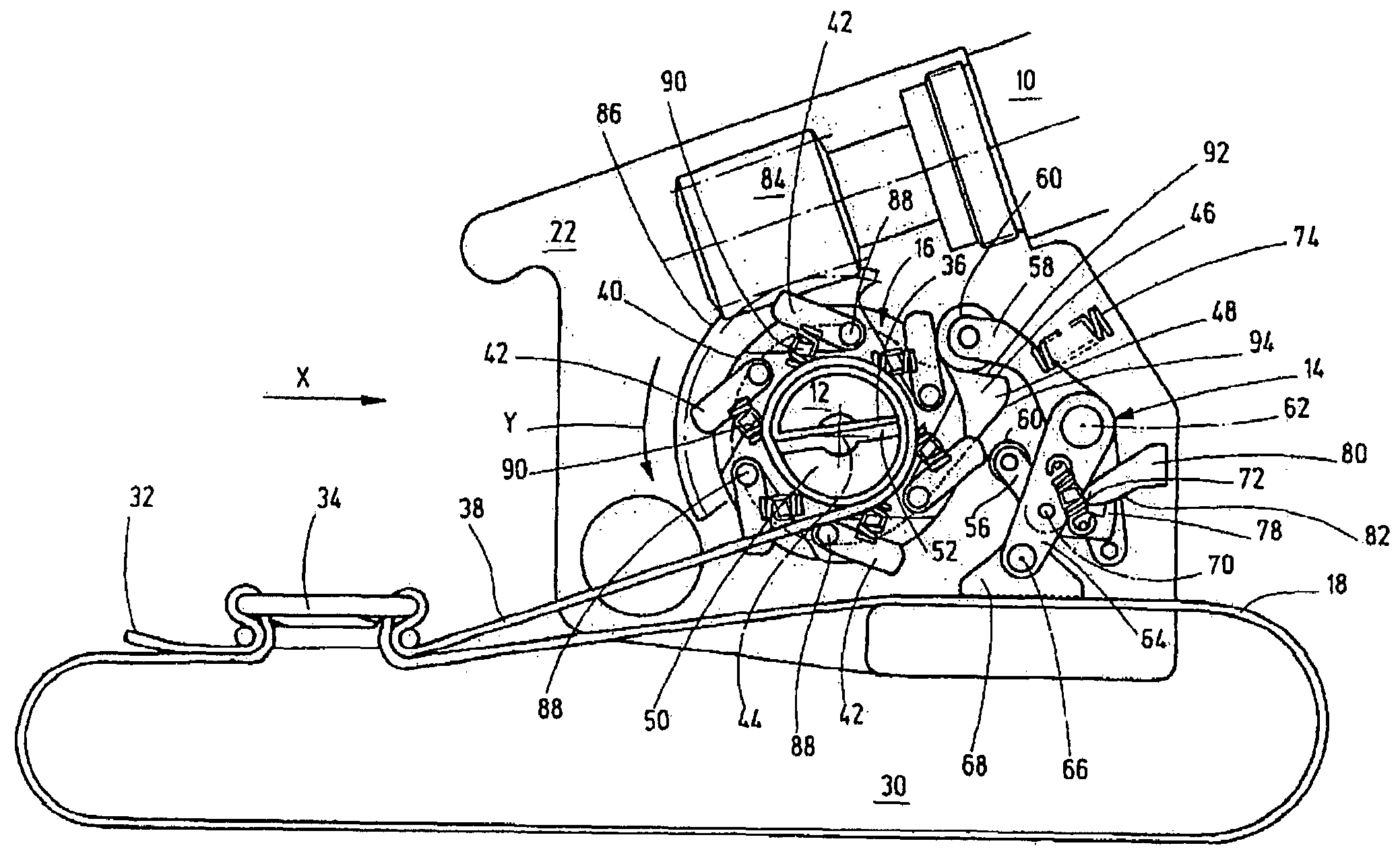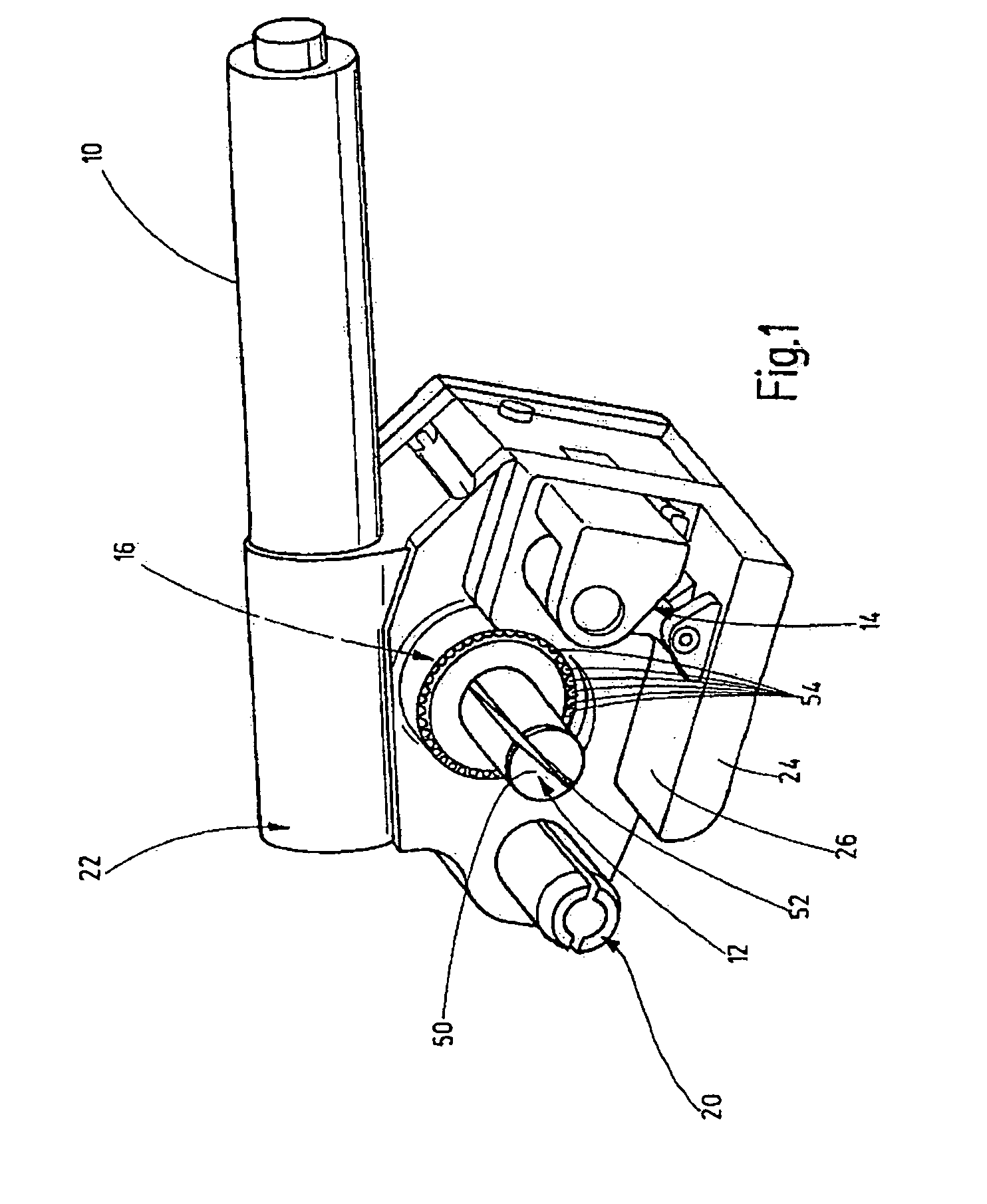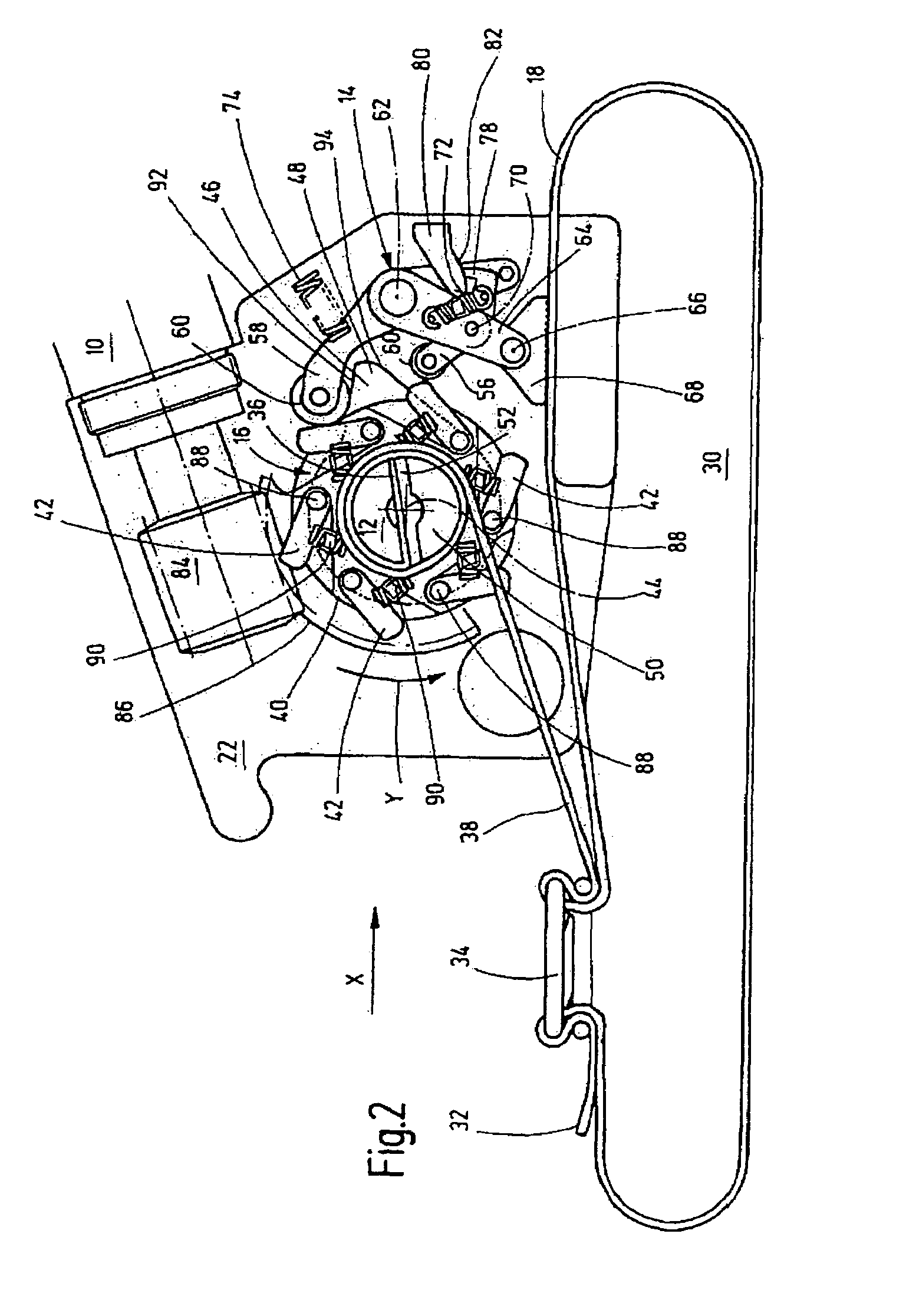Apparatus for tensioning a band
a band tensioning and band technology, applied in the field of accessories for tensioning bands, can solve the problems of faults in operation, difficulty in manual use management, and inability to meet the needs of use, and achieve the effects of reducing geometrical dimensions, reducing labor intensity, and facilitating use in us
- Summary
- Abstract
- Description
- Claims
- Application Information
AI Technical Summary
Benefits of technology
Problems solved by technology
Method used
Image
Examples
first embodiment
[0026]The control cams 42 (a total of six) of the first control part 40 are arranged at discrete distances from one another extending along the closed curve path extending concentrically to the winding shaft 50. In this first embodiment, the control cams 42 are movable around a pivoting axis 88 against the action of another energy storage device in the form of compression springs 90. A different number of control cams 42 is possible. In this respect, the pivoting control cams 42 are held in at least the direction of rotation Y of the winding shaft 50 in the trigger position for parts of the lever drive in the form of the curve roller 60 of the angle lever 56. The second control part 46, as already described, has a control cam 48 forming on the outer peripheral side an involute path with control flanks 92, 94 tapering conically to its free end. Control flank 92 forms an abutment surface for parts of the lever drive in the form of a curve roller 60 for the upper angle lever 58.
[0027]T...
second embodiment
[0037]In the second embodiment shown in FIGS. 10 to 13, the disk-shaped control part 40 interacting with the winding shaft 50 is equipped with stationary control cams 42a instead of the spring-loaded, movable control cams 42. To achieve the same action as described above, in addition to the angle lever 56, another angle lever 108 is provided having the same pivoting axis 70 as the lever 56. The free end of angle lever 108 overlaps the other angle 56 in the region of the contact flank 78 on the end side with an overlap piece 110 (cf. FIG. 12). In this contact position, the angle lever 108 is held via another tension spring 112. The overlap piece 110 ensures that the angle lever 56 with its contact surface 78 can extend underneath, engaging the stationary catch support 80, according to the foregoing description (cf. FIG. 13).
third embodiment
[0038]In the third embodiment shown in FIGS. 14 to 17, the control disk as the first control part 40 connected securely to the latter, viewed in the direction of FIGS. 14 and 16, has control cams 42b projecting to the rear. If, as already described, the drive unit 10 is turned on, the direction of rotation Y is to result and the winding shaft 50 turns counterclockwise. The control disk is the driver disk 114 permanently connected to the winding shaft 50. An actuating disk 116, pivotally guided on the winding shaft by a conventional bearing site 118 provided with freewheeling, has a spring-loaded actuating pin 120. Viewed in the direction of FIGS. 14 and 15, actuating pin 120 keeps a projecting actuating journal 122 in contact with the projecting, underlying stationary control cam 42b. When the actuating disk 116 continues to be pivoted in the direction of rotation Y, the actuating pin 120 comes into contact with a control housing part 124, and, as shown in FIGS. 16 and 17, is presse...
PUM
 Login to View More
Login to View More Abstract
Description
Claims
Application Information
 Login to View More
Login to View More - R&D
- Intellectual Property
- Life Sciences
- Materials
- Tech Scout
- Unparalleled Data Quality
- Higher Quality Content
- 60% Fewer Hallucinations
Browse by: Latest US Patents, China's latest patents, Technical Efficacy Thesaurus, Application Domain, Technology Topic, Popular Technical Reports.
© 2025 PatSnap. All rights reserved.Legal|Privacy policy|Modern Slavery Act Transparency Statement|Sitemap|About US| Contact US: help@patsnap.com



